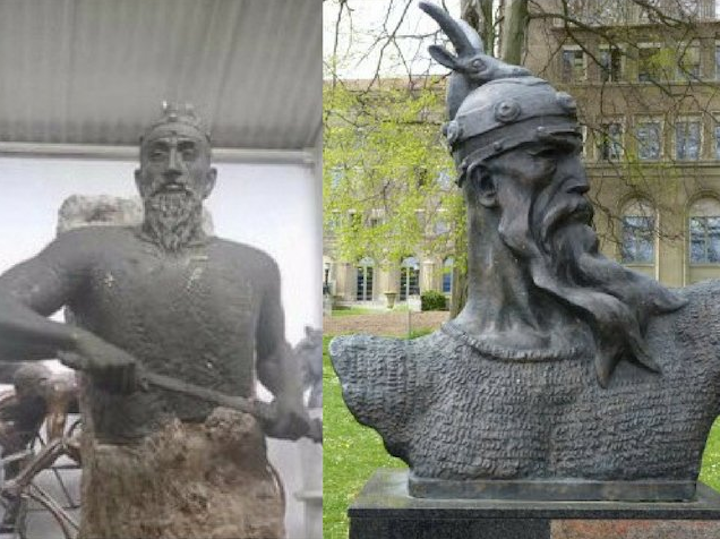

A statue of Albanian hero George Castriota Skanderbeg (Gjergj Kastrioti Skënderbej or Skënderbeu in Albanian) set to be displayed in Budapest has caused outrage, due to an alleged lack of Albanian features.
When the Albanian ambassador to Hungary, Arian Spasse, posed with sculptor Mihály Gábor and his half-finished work on 25 July, the photos posted on social media gave rise to a tirade: the monument was far too Slavic for some people’s tastes, prompting a stream of passionate responses both from members of the public and well known figures.
Art expert Ardian Isufi, Dean of Fine Arts at the University of Tirana, argued that the features of this particular Skanderbeg did not look like those of an Albanian.
“I never have seen a more strikingly ambiguous Skanderbeg ... It might be a Hungarian, Bulgar or Serb but never an Albanian,” Mr Isufi posted on Facebook on 27 July, exhorting Albania’s foreign ministry to react to continued attempts to misrepresent Albanian culture and history.
Despite assurance from Mr Spasse that the sculpture would undergo changes, as well as the removal of the photos by the Albanian embassy in Hungary, many in the local art community remain far from convinced.
In an interview with Balkan Investigative Reporting Network, audiovisual artist Ilir Lluka expressed his grave concern about the wider implications of the monument, which he argues gives the impression that Albanian and Slavic nationalities are analogous.
“Many people might consider these criticisms trivial ... but this is a case when appearance takes on importance, contributing to an international ignorance about Albanians and over who they are,” he stated.
Albanian national hero Skanderbeg (d. 1468) fought in the 15th century against the Ottomans together with Hungarian military and political figure John Hunyadi, next to whose statue Skanderbeg’s monument is due to be erected.
Source: Balkan Insight